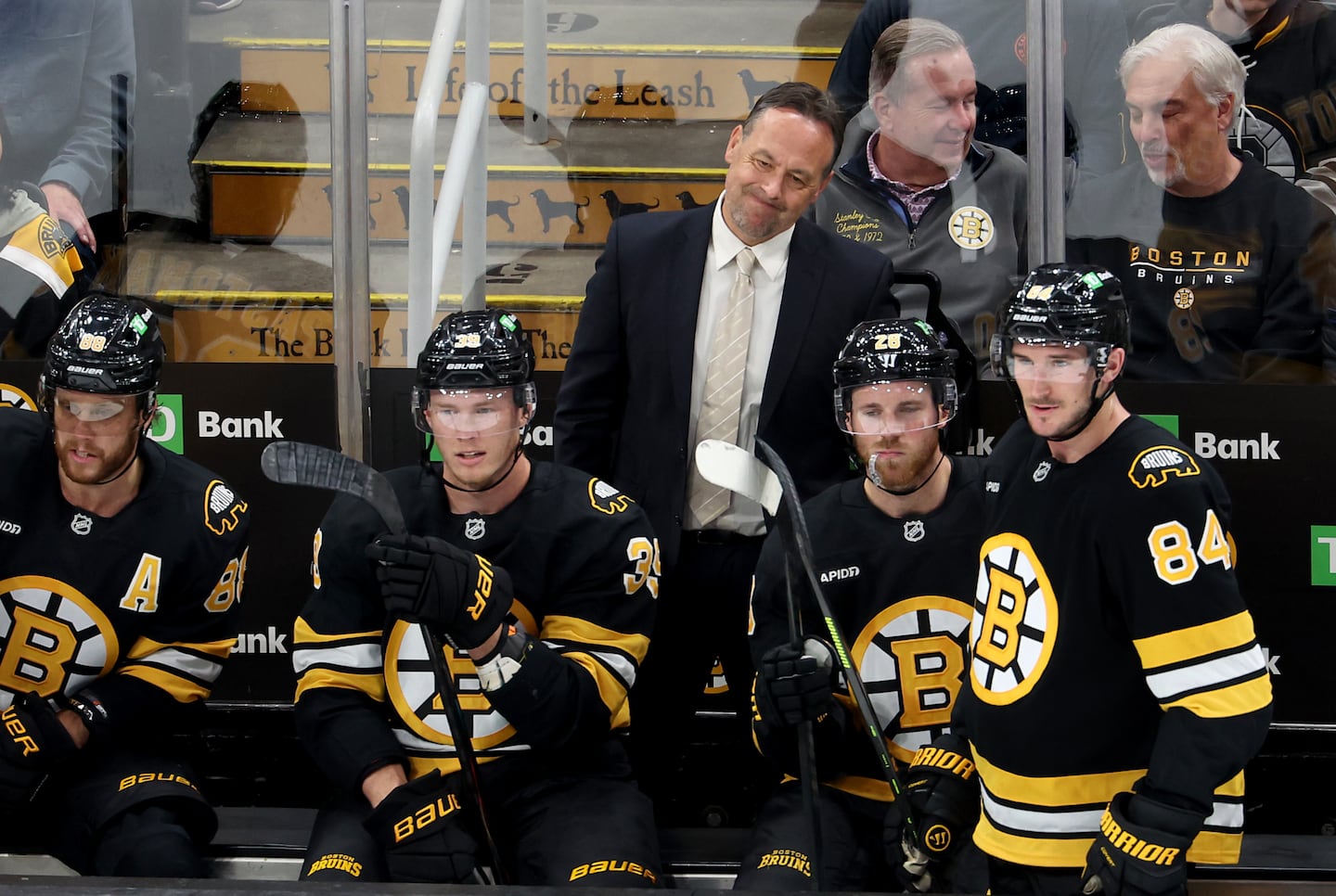With 82 games to go between now and April 13, here are the three vital questions facing the distant puck-lugging sons of Charles Adams, Art Ross, and Eddie Shore:
Who is the No. 1 center?
We’re still waiting on this one, as a third season is about to commence since the Patrice Bergeron-David Krejci retirements. That sound you hear is that of 17,000-plus at TD Garden impatiently strumming fingers across their arm rests and cup holders.
The answer should be, is supposed to be, needs to be and better be … Elias Lindholm, who was handed the resident rainmaker position a year ago, then arrived in camp with his back injured and a foot in Palookaville.
Lindholm showed some encouraging signs down the stretch that he can be the guy. And if he’s not? Maybe Pavel Zacha. Possibly Casey Mittelstadt. More likely a committee approach, and 1C by committee usually plays like decaf cappuccino (what’s the point?).
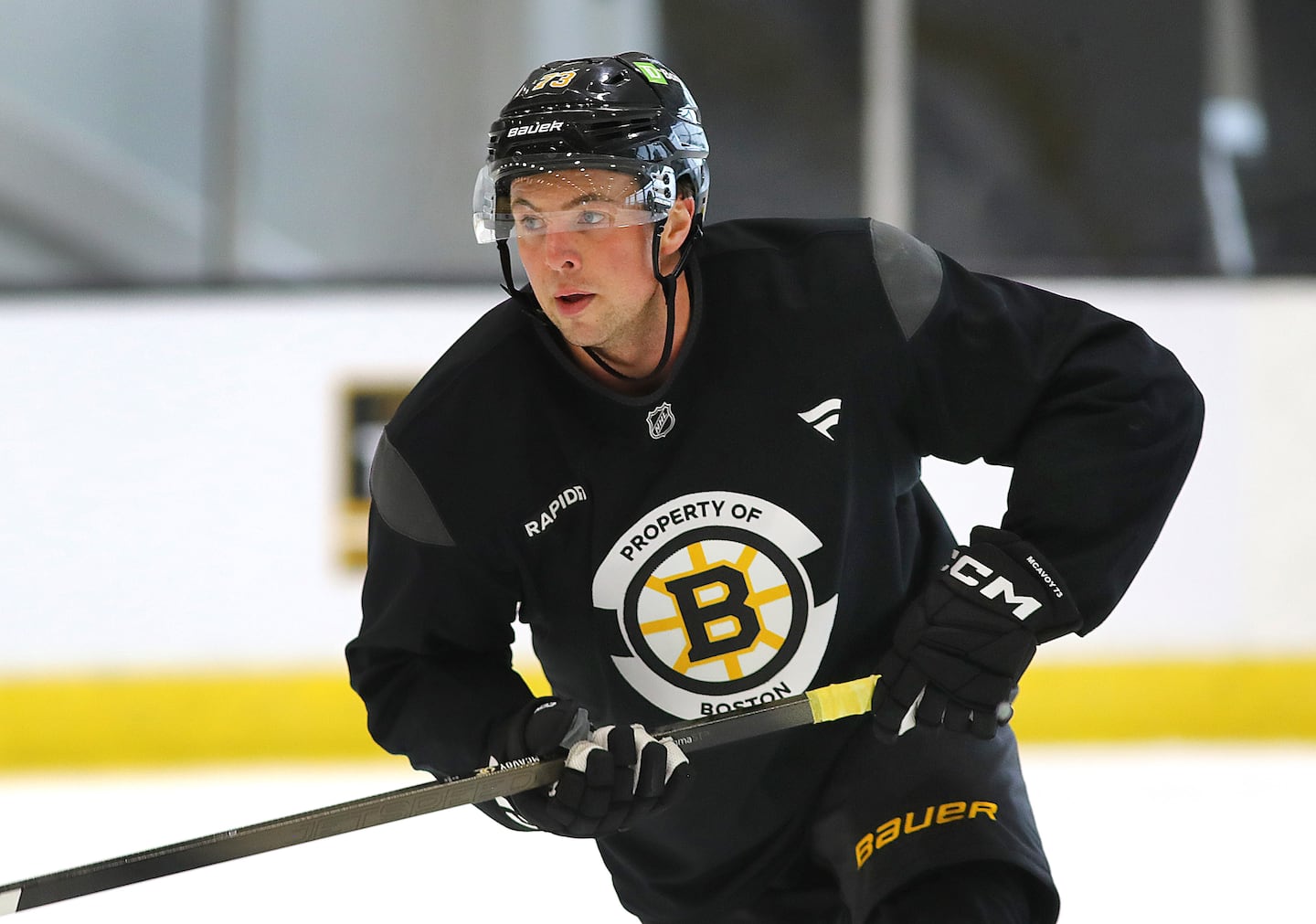 Entering his ninth NHL season, will Charlie McAvoy finally become the productive power-play point man the Bruins desperately need him to be?John Tlumacki/Globe Staff
Entering his ninth NHL season, will Charlie McAvoy finally become the productive power-play point man the Bruins desperately need him to be?John Tlumacki/Globe Staff
Whither the power play? And who is the point man for that alleged power play?
The man advantage last season sort of started out real slow and then fizzled out altogether, including configurations pre- and post-March 7 trade deadline yard sale.
Newly arrived assistant coach Steve Spott, his hands now deep in the whole 100 pounds of ugly clay, has been charged with conjuring up the fix. There weren’t enough looks in training camp to tell if there’s any mojo there. Power plays need reps and rhythm. We’ll withhold judgement for most of October, when there’s 13 games pressed into 23 days.
Figure Morgan Geekie, David Pastrnak, Viktor Arvidsson and Lindholm as PP1’s four forwards (Geekie often in a hybrid swing spot), and Charlie McAvoy as the aforementioned point man.
McAvoy, 27, is entering his ninth NHL season. He made his debut in the 2017 playoffs, what was Bruce Cassidy’s first postseason behind the Bruins bench. With Sturm now his fourth bench boss here, McAvoy has yet to blossom fully as the power-play force the franchise desperately needs back there.
McAvoy can handle the puck, find the open man, deliver the puck, move along the blue line laterally … but his reluctance to shoot mutes those skills and too often turns the advantage into a cold, uncooked nothing burger.
For the most part, PP1 is a 50-to-60-second assignment. It calls for quick puck movement, quick reads and, ideally, a fast and accurate trigger at the point. We haven’t seen that around here since Bergeron went home and took his bumper with him.
If it’s not McAvoy, then maybe it’s Hampus Lindholm. If it’s not the Hammer, then maybe it’s Mason Lohrei. But it has to be someone, and soon … or fuhgettaboutit.
Team identity … who will these Bruins be?
Frankly, this is beyond the “who’s going to be captain?” question. The guess here is that Pastrnak gets the “C”, although a team’s overall identity isn’t shaped and curated by a lone player. It takes a village.
As presently constructed, this is a Bruins team that will be paced, led, and carried by No. 1 goaltender Jeremy Swayman and a stout, mobile defense corps topped by McAvoy, Lindholm and Nikita Zadorov. It won’t be a team that will outscore its mistakes — few teams do that — and some nights will be challenged even to win, say, 1-0 or 2-1. The latter truth only changes if they indeed find that No. 1 center.
What the Bruins need to develop and tap into, night after night, is identity and attitude — a stubbornness and feistiness, which is what led general manager Don Sweeney in July to bring in free-agent forwards Mikey Eyssimont and Tanner Jeannot. If those two could chip in, say, 18-20 goals between them, that’s super. But they were brought aboard mainly to infect the lineup with their pluck, sandpaper, and resilience. We saw too little of that here the last couple of seasons.
It was a franchise long ago that routinely played with cocksure swagger and snarl, and that often went a long way … at least until faced with a deeper, more talented bunch of Canadiens. Teams don’t get that all back with a shift or two, or even necessarily with a player or two. But it remains a game, and the NHL remains a league, in which attitude can be as valuable as a 50-goal scorer.
Absent an abundance of the latter, this looks like a team that would do well to find its game face in a hurry.
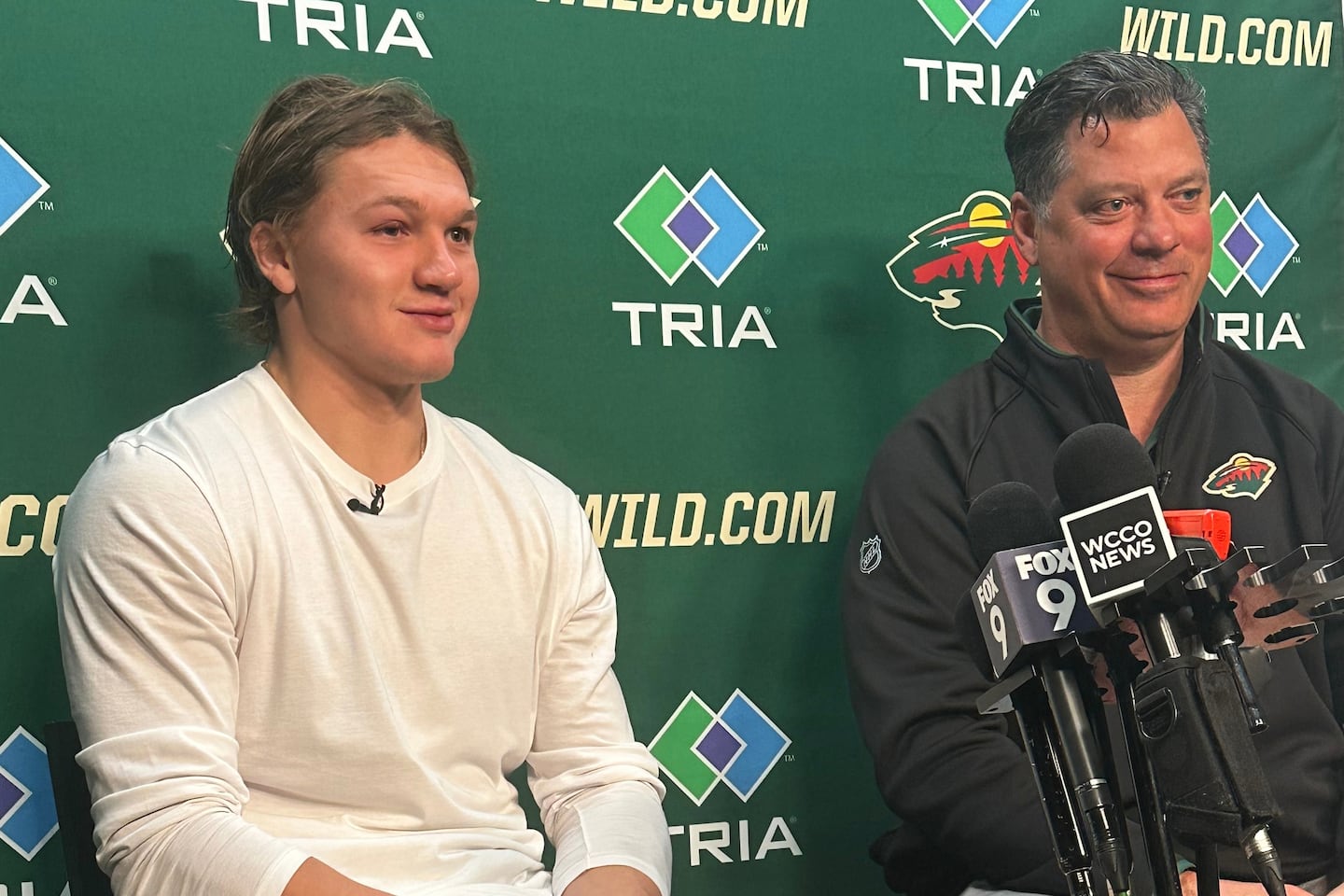 Wild general manager Bill Guerin (right) finally got a deal done with Russian left winger Kirill Kaprizov, and it’s only the richest contract in NHL history. Dave Campbell/Associated Press
Wild general manager Bill Guerin (right) finally got a deal done with Russian left winger Kirill Kaprizov, and it’s only the richest contract in NHL history. Dave Campbell/Associated Press
RECORD DEAL
Kaprizov lands historic pact
Kirill Kaprizov hit the mother lode in St. Paul, the dazzling Wild winger securing an eight-year contract extension for $136 million. The deal kicks in next October and carries a record-setting $17 million-a-year average payout. (These figures, dear Sunday Notes readers, are not typos.)
Kaprizov, 28, is one of the game’s few true entertainers — fast, clever with the puck, and with a dazzling, quick-pivoting skating style. It’s that E-factor in his game, along with general manager Bill Guerin coming to terms with how vital Kaprizov is to the Wild market, that drove the price that high. Perhaps too high? Never the case when there is at least one buyer willing to pony up the price.
There are distinct parallels here to what played out with Derek Sanderson, then just turning age 26, with the Bruins in the summer of 1972. The Turk that summer became the highest-paid pro athlete in the world, inking a 10-year deal valued at an unheard of $2.65 million with the Philadelphia Blazers in the rival WHA.
The Bruins had Bobby Orr and Phil Esposito as their dual puck gods — the game’s top two offensive forces at the time. The stylish, flamboyant, quotable, irrepressible Sanderson was a key component to the Black and Gold Cup wins in ’70 and ’72. But he wasn’t Orr and he wasn’t Espo.
Bruins ownership figured they could let Sanderson walk, and weather the hit to both fan base and roster. Ownership was right, even if the next Cup didn’t follow for another 39 years.
Sanderson, at least prior to signing the deal, was worth more to the Blazers as they fought to establish a foothold aside the burgeoning Flyers. The Bruins simply printed the 1972-73 home schedule and added names to the list of the thousands waiting to buy season tickets. The Bruins owned the city, the state, and all of New England. The Blazers were one hand clapping in a city the Flyers were about to own as the marauding Broad Street Bullies.
Which is to say, market forces always dictate. Kaprizov right now defines the Minnesota hockey market, even to a greater degree than the more talented Mike Modano did for the State of Hockey in the early-90s, before those market forces carried the franchise to Dallas.
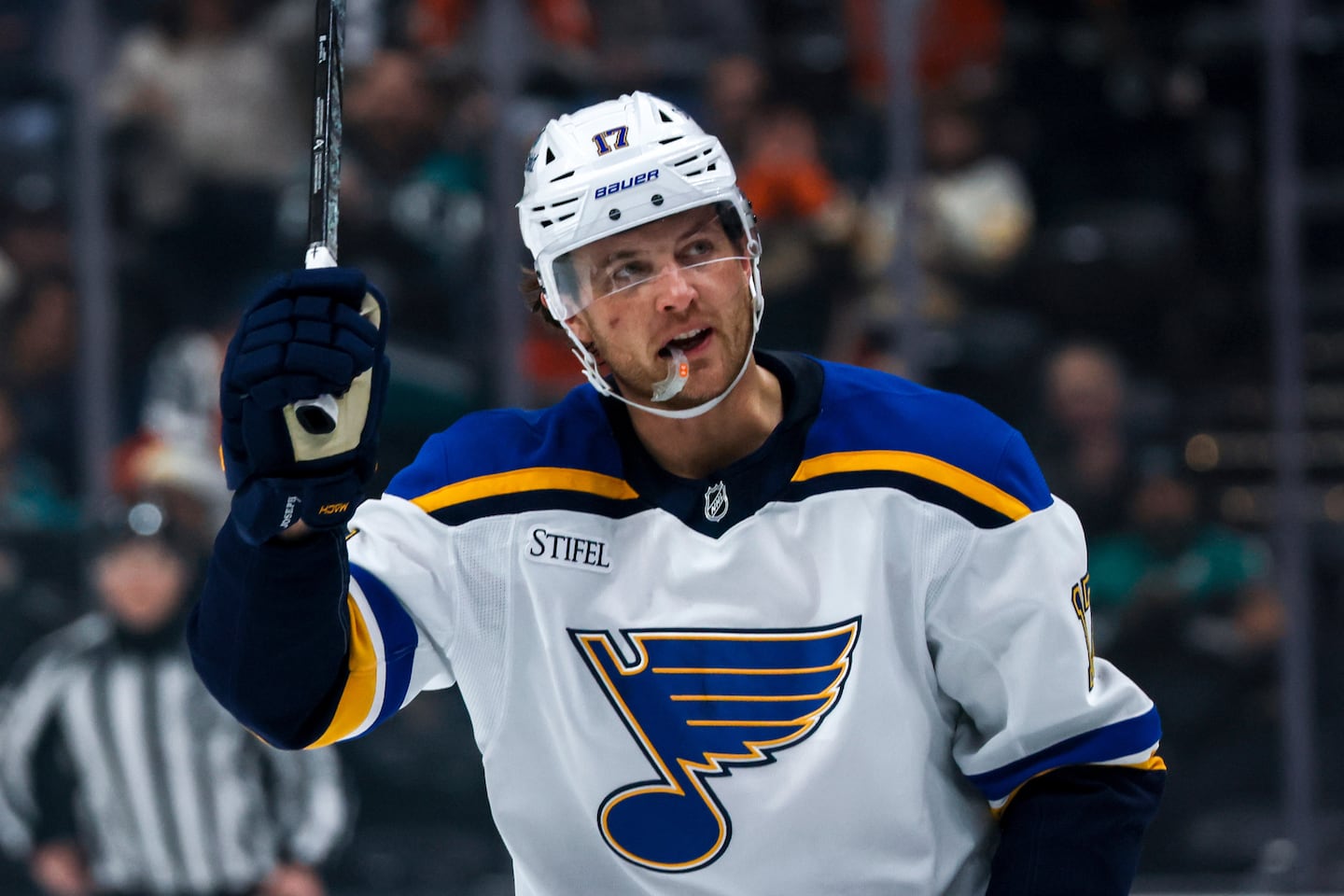 Cam Fowler bolstered the Blues defense corps when he arrived in December last year, helping turn the tide for Jim Montgomery’s squad as St. Louis made a remarkable run into the playoff field.Etienne Laurent/Associated Press
Cam Fowler bolstered the Blues defense corps when he arrived in December last year, helping turn the tide for Jim Montgomery’s squad as St. Louis made a remarkable run into the playoff field.Etienne Laurent/Associated Press
SHREWD MANEUVER
Fowler hits right note for Blues
The Blues early in the week — before all the Kaprizov rattle and hum — signed ex-Ducks backliner Cam Fowler to a comfy extension (3 years, $18.3 million) that will kick in next October at age 34.
Fowler’s impact with The Note was monumental last season, after being shipped to St. Louis for a pittance Dec. 14 — the same day the Bruins, in similar dire straits at the time, plucked Oliver Wahlstrom off waivers from the Islanders.
Fowler almost singlehandedly repaired Jim Montgomery’s backline, then still in need of an answer to the loss of the injured Torey Krug. His 9-27–36 totals over 51 games helped the Blues salvage the season and lift them into the playoffs. He then delivered 2-8–10 in seven playoff games, a 1.43 points-per-game average that ultimately led all playoff defensemen in that category (runnerup: the Oilers’ Evan Bouchard at 1.05 ppg).
The pocket change the Blues sent the Ducks in December: 6-foot-4-inch 23-year-old defenseman/project Jeremie Biakabutuka and a Round 2 pick in the June 2027 draft. And the Blues also received a 2027 fourth rounder for their trouble.
Keep in mind, Fowler’s stock had sunk, albeit in lockstep with a Ducks franchise that had gone seven seasons (now eight) without making the playoffs. Blues GM Doug Armstrong moved in at the bottom of Fowler’s market — some three months prior to the trade deadline — for what was among the league’s best in-season acquisitions.
Prior to Dec. 14, the Blues had lost two of three and stood 14-14-2 in the standings. With Fowler added to the mix, they finished out 29-16-6 (.627 points percentage), and then stretched the Jets to near elimination before before bowing out in a Game 7 double-overtime loss in Round 1 out West (Presidents Trophy-winner Winnipeg tied it with just 2.2 seconds left in regulation to force OT).
The Bruins prior to Dec. 14, about a month into Joe Sacco’s bench tenure, were 15-13-3 — still hopeful that Lindholm could recover from his fractured kneecap and make the backline whole. Had the front office known then that Lindholm was lost for the season, his $6.5 million cap hit could have been taken off the books — the exact cap number that Fowler carried with him from Anaheim, where he and Lindholm once were teammates.
Wahlstrom, a lost piece in the avalanche of futility that befell the Bruins, last month signed a Professional Tryout deal with San Jose. As the weekend approached, he looked unlikely to stick with the Teal varsity and instead destined to the AHL San Jose Barracuda under a minor-league deal.
Armstrong, upon getting Fowler’s name on a new deal: “We’ve loved everything he’s done.”
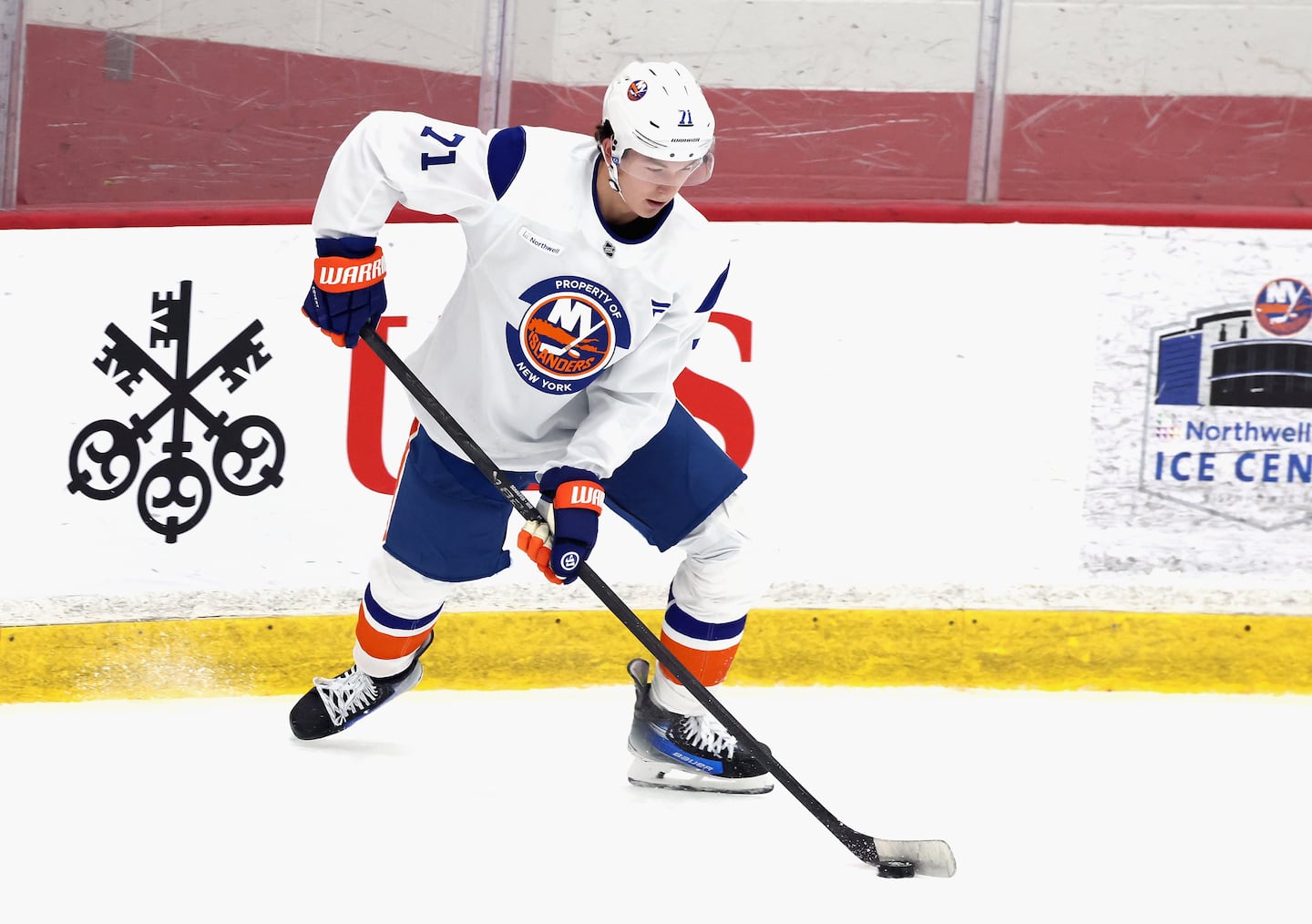 Matthew Schaefer, the No. 1 overall pick in the 2025 NHL Draft, is going to buck a recent trend and actually play for the Islanders right away. Bruce Bennett/Getty
Matthew Schaefer, the No. 1 overall pick in the 2025 NHL Draft, is going to buck a recent trend and actually play for the Islanders right away. Bruce Bennett/Getty
TIMES HAVE CHANGED
Firsts no longer locks right away
As clubs continued to make their final roster trims over the weekend, the top three kids in the recent June draft — Matthew Schaefer, Michael Misa, and Anton Frondell — all still remained in the mix to make their NHL debuts in their respective clubs’ season openers.
Sounds obvious, right? It’s not. Recent history, as recent as last season, has shown that it’s typically a tough ask for even the world’s best 18-year-olds to walk right in, set right down, and daddy let your mind roll on from right off the hop.
Exhibit “A”, last season: Of the 225 kids selected in the June 2024 draft, only seven of them played at least one NHL game — including Zeev Buium, the talented Wild defenseman who signed in the spring out of the University of Denver and debuted with four playoff games on the Wild backline.
Ex-Boston University center Macklin Celebrini, the No. 1 pick by San Jose, was the lone member of the ’24 draft class to stick last season as an NHL regular (70 games; 25-38–63 totals). Chicago backliner Artyom Leshunov (No. 2 overall) was next in line for games played, logging only 18 with the Hawks varsity and 54 with AHL Rockford.
Otherwise, the rest of the entire class of ’24 totaled 17 regular season games, including two by dazzling Russian forward Ivan Demidov with the Canadiens. Demidov will enter the new season among the favorites to cop Calder (Rookie of the Year) honors.
The confident, mature Schaefer appears to be a lock to play substantial minutes on the Islanders backline, though coach Patrick Roy has continued to preach patience and tamp down expectations.
Misa, who piled up 62 goals and 134 points last season with OHL Saginaw, has looked savvy enough in preseason to line up out of the gate as the Sharks’ No. 2 pivot behind Celebrini.
Frondell, a 6-1 center looking to make the jump straight from Sweden’s bigger ice surface, is vying for a spot in a Blackhawks lineup in need of help up and down the forward corps. On Thursday night, Chicago makes its lone visit this season to the Garden.
The 1979 entry draft, in which the Bruins selected Ray Bourque at No. 8, was comprised of 21 first-rounders, leading a total draft class of 126 players.
Bourque and Mike Ramsey (No. 11, Buffalo) were the lone 18-year-olds selected in the first round. The remaining 19 first-rounders were either age 19 or 20, including No. 1 pick Rob Ramage (Colorado).
No fewer than 11 of the 21 first-rounders ultimately played at least 1,000 NHL regular-season games, led by Bourque’s 1,612.
And the kicker is … all 21 first-round picks became roster regulars in that 1979-80 season that immediately followed the draft. The vast majority became NHL regulars that October. One of the rare exceptions was Ramsey, who spent most of that season playing for Herb Brooks and the US National Team. He turned pro with the Sabres in February 1980, arriving from Lake Placid with Olympic gold around his neck and kids across America turned on to hockey.
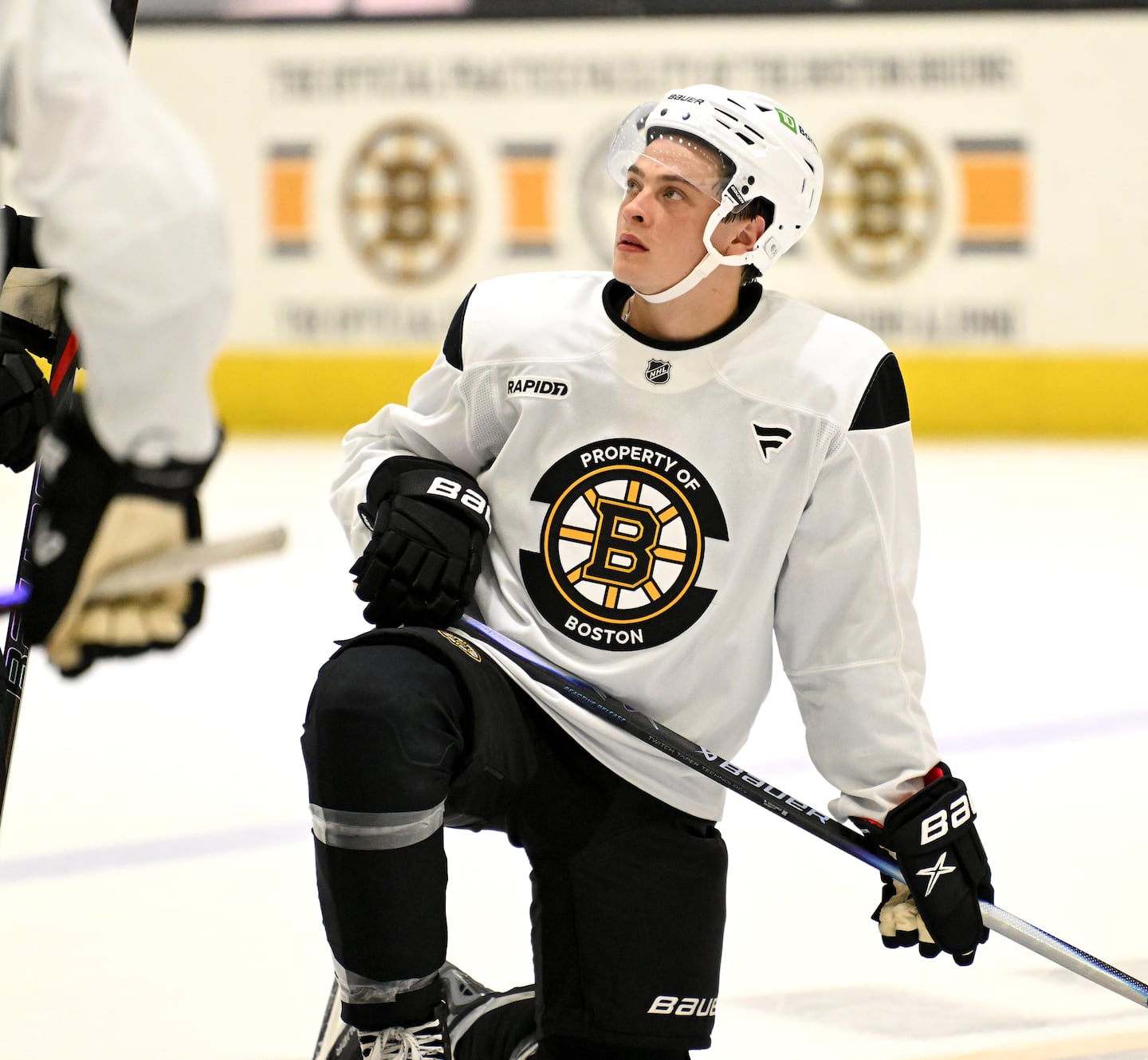 Boston College star James Hagens, who took part in Bruins Development Camp back in late June, is going to see a lot of fellow Boston draft picks right off the bat in the Eagles season.Ken McGagh for The Boston Globe
Boston College star James Hagens, who took part in Bruins Development Camp back in late June, is going to see a lot of fellow Boston draft picks right off the bat in the Eagles season.Ken McGagh for The Boston Globe
PROSPECT PIPELINE
Eagles to see familiar faces
James Hagens, the Bruins bright-and-shiny Round 1 pick in June, opened his sophomore season with Boston College Friday night vs. Quinnipiac at Conte Forum.
Headed into the Bruins’ varsity training camp three weeks ago, coach Marco Sturm, though fully understanding the situation, lamented how many of the club’s recent draft prospects remain in college and thus out of his reach as the Black and Gold’s new bench boss.
“Wish we had ’em all here,” noted Sturm, whose tenure as the AHL Ontario Reign coach increased his appetite for teaching. “I mean, I get it, it’s how it all works, but … ”
The Eagles, who next play Thursday-Friday at the University of Minnesota, entered the new season with no fewer than five other Bruins prospects, including 2024 first-rounder (No. 25) Dean Letourneau, a 6-7 center. The others: centers Will Moore and Andrea Gasseau, winger Oskar Jelvik, and defenseman Kristian Kostadinski.
Quinnipiac’s 2025-26 roster includes a pair of Bruins prospects: center Christopher Pelosi and blueliner Elliott Groenewold.
In Minnesota, the Eagles should see another Boston prospect, sophomore center Beckett Hendrickson, who delivered 3-9–12 last year as a Golden Gopher freshman. Darby Hendrickson, his dad, played some 10 NHL seasons as a center, mostly with the Leafs and Wild.
Loose pucks
Some perspective on how the NHL’s increasing cap number minimizes the sting of individual contacts in terms of overall percentage of payroll: When the Ducks signed Fowler, his $6.5 million cap hit represented 8.18 percent of payroll when the deal began with the 2018-19 season (max cap: $79.5 million). His new deal, at $6.1M, will be but 5.87 percent of what is projected to be a $104 million max cap headed into next season (2026-27) … Ex-BU backliner Lane Hutson copped the Calder Trophy last season with his 6-60–66 stellar debut with the Habs. If Demidov were to win the Calder this season, it would be the first time in nearly 60 years that the same franchise collected back-to-back rookie honors. The last time: Orr (1967) and Sanderson (68) with the Bruins, each of them coached then by Harry Sinden, who last month celebrated his 93rd birthday … What now of Oilers superstar Connor McDavid and his next deal in the wake of Kaprizov’s pact? Now 28 and the game’s No. 1 player, McDavid has an expiring deal that carries a $12.5 million AAV. Of the infinite scenarios circulating, the one that might make most sense is that he signs a two-year extension in Edmonton for a touch above Kaprizov’s $17 million, and then assesses where the team and market have gone 48 months from now. Some risk, yes, but his last deal was for $100 million, written in 2017 by then GM Peter Chiarelli. He can afford to take a chance on himself.
Kevin Paul Dupont can be reached at kevin.dupont@globe.com.

